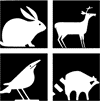Wildlife Damage Management, Internet Center for
Date of this Version
October 2000
Document Type
Article
Abstract
The sprawling communities surrounding cities pose a paradox for wildlife. Suburban habitat, with parks, greenways, and planned open spaces, provide attractive habitat with abundant resources for some wildlife species. Yet the landscape is dominated by human activities and disturbances. Species with little tolerance for human disturbance and habitat changes have difficulty maintaining their populations in suburban environments. Yet more adaptable species flourish in suburban areas where there are less predators, increased food resources, and abundant habitat for cover and raising young. The resulting overabundant wildlife populations pose increasing problems for biologists, wildlife damage practitioners, and the public. Management of urban and suburban wildlife requires not only sound ecological studies, but also an understanding of public attitudes and interests. Human value systems, including politics, economics, health and safety, and cultural differences, are central to the management and control of wildlife species in urban/suburban areas. Even among the best studied and managed species, we need better information on the relationship between human attitudes, management strategies, habitat conditions, and sustainable wildlife populations. This paper places the issues of wildlife damage management within the larger context of suburban wildlife conservation and management. Wildlife control is part of a bigger picture of overabundant wildlife populations, habitat conditions, and human dimensions. I discuss a conceptual model for suburban wildlife management that includes inputs from both ecological and sociological data and outputs measured by changing wildlife populations. The model is illustrated with data from the white-tailed deer (Odocoileus virginianus) in Massachusetts.


